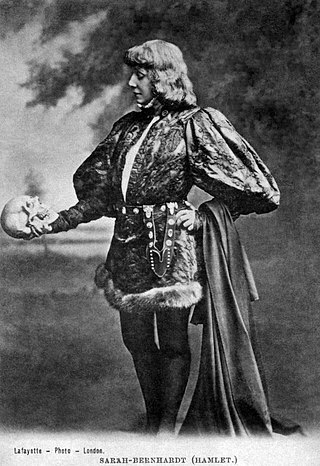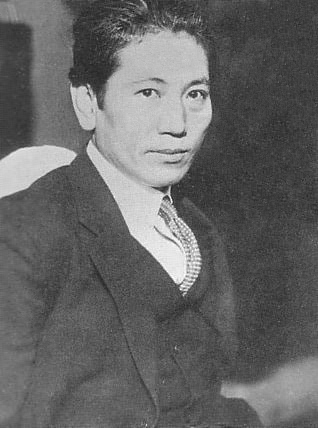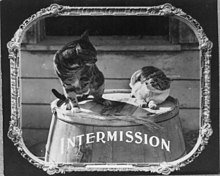
Acting is an activity in which a story is told by means of its enactment by an actor who adopts a character—in theatre, television, film, radio, or any other medium that makes use of the mimetic mode.

Digital cinema refers to the adoption of digital technology within the film industry to distribute or project motion pictures as opposed to the historical use of reels of motion picture film, such as 35 mm film. Whereas film reels have to be shipped to movie theaters, a digital movie can be distributed to cinemas in a number of ways: over the Internet or dedicated satellite links, or by sending hard drives or optical discs such as Blu-ray discs.

A movie theater, cinema, or cinema hall, also known as a movie house, picture house, picture theater or simply theater, is a business that contains auditoria for viewing films for public entertainment. Most are commercial operations catering to the general public, who attend by purchasing tickets.

Throne of Blood is a 1957 Japanese jidaigeki film co-written, produced, edited, and directed by Akira Kurosawa, with special effects by Eiji Tsuburaya. The film transposes the plot of William Shakespeare's play Macbeth from Medieval Scotland to feudal Japan, with stylistic elements drawn from Noh drama. The film stars Toshiro Mifune and Isuzu Yamada in the lead roles, modelled on the characters Macbeth and Lady Macbeth.
Entr'acte means 'between the acts'. It can mean a pause between two parts of a stage production, synonymous to an intermission, but it more often indicates a piece of music performed between acts of a theatrical production.

Noh is a major form of classical Japanese dance-drama that has been performed since the 14th century. Developed by Kan'ami and his son Zeami, it is the oldest major theater art that is still regularly performed today. Although the terms Noh and nōgaku are sometimes used interchangeably, nōgaku encompasses both Noh and kyōgen. Traditionally, a full nōgaku program included several Noh plays with comedic kyōgen plays in between; an abbreviated program of two Noh plays with one kyōgen piece has become common today. Optionally, the ritual performance Okina may be presented in the very beginning of nōgaku presentation.

A movie projector is an opto-mechanical device for displaying motion picture film by projecting it onto a screen. Most of the optical and mechanical elements, except for the illumination and sound devices, are present in movie cameras. Modern movie projectors are specially built video projectors.
An act is a major division of a theatre work, including a play, film, opera, ballet, or musical theatre, consisting of one or more scenes. The term can either refer to a conscious division placed within a work by a playwright or a unit of analysis for dividing a dramatic work into sequences. The word act can also be used for major sections of other entertainment, such as variety shows, television programs, music hall performances, cabaret, and literature.

Kyōgen is a form of traditional Japanese comic theater. It developed alongside Noh, was performed along with Noh as an intermission of sorts between Noh acts on the same stage, and retains close links to Noh in the modern day; therefore, it is sometimes designated Noh-kyōgen. Its contents are nevertheless not at all similar to the formal, symbolic, and solemn Noh theater; kyōgen is a comic form, and its primary goal is to make its audience laugh.
A roadshow theatrical release or reserved seat engagement is the practice of opening a film in a limited number of theaters in major cities for a specific period of time before the wide release of the film. Roadshows would generally mimic a live theatre production, with an upscale atmosphere as well as somewhat higher prices than during a wide release. They were commonly used to promote major films from the 1920s–60s and build excitement.

A projectionist is a person who operates a movie projector, particularly as an employee of a movie theater. Projectionists are also known as "operators".

A revolving stage is a mechanically controlled platform within a theatre that can be rotated in order to speed up the changing of a scene within a show. A fully revolving set was an innovation constructed by the hydraulics engineer Tommaso Francini for an elaborately produced pageant, Le ballet de la délivrance de Renaud, which was presented for Marie de Medici in January 1617 at the Palais du Louvre and noted with admiration by contemporaries. Such a stage is also commonly referred to as a turntable.

Traditional Japanese theatre is among the oldest theatre traditions in the world. Traditional theatre includes Noh, a spiritual drama, and its comic accompaniment kyōgen; kabuki, a dance and music theatrical tradition; bunraku, puppetry; and yose, a spoken drama.

Benshi (弁士) were Japanese performers who provided live narration for silent films. Benshi are sometimes called katsudō-benshi (活動弁士) or katsuben (活弁).

Tetsuji Takechi was a Japanese theatrical and film director, critic, and author. First coming to prominence for his theatrical criticism, in the 1940s and 1950s he produced influential and popular experimental kabuki plays. Beginning in the mid-1950s, he continued his innovative theatrical work in noh, kyōgen and modern theater. In late 1956 and early 1957 he hosted a popular TV program, The Tetsuji Takechi Hour, which featured his reinterpretations of Japanese stage classics.
Intercultural theater, also known as cross-culturaltheatre, may transcend time, while mixing and matching cultures or subcultures. Mixing and matching is the unavoidable process in the making of inner connections and the presentations of interculturalities. The majority of the works in intercultural theatre deal basically with thinking and doing around the themes, stories, pre-performative or performative concepts of Asian classical theatre or traditional performing arts forms and practices, mixing and matching the concepts or the ideas of the foreign. After the well-known success of Peter Brook's production of the Mahabharata, the trend has been evolving tremendously around the globe and many the cultural institutions of many governments have become directly interested in pushing the boundaries of intercultural senses and sensitivities by financially investing on new theatrical productions, university research, conferences and fellowships

Kinoautomat was the world's first interactive movie, conceived by Radúz Činčera for the Czechoslovak Pavilion at Expo 67 in Montreal, Quebec, Canada. At nine points during the film the action stops, and a moderator appears on stage to ask the audience to choose between two scenes; following an audience vote, the chosen scene is played.

A film – also called a movie, motion picture, moving picture, picture, photoplay or (slang) flick – is a work of visual art that simulates experiences and otherwise communicates ideas, stories, perceptions, feelings, beauty, or atmosphere through the use of moving images. These images are generally accompanied by sound and, more rarely, other sensory stimulations. The word "cinema", short for cinematography, is often used to refer to filmmaking and the film industry, and the art form that is the result of it. Films can vary in genre, style, length and format, and they are typically produced for entertainment, education, cultural expression, or commercialpurposes. They are usually shown in theaters, on television, or via streaming platforms.

Cinema of South India, refers to the cinema of the four major film industries in South India; primarily engaged in making feature films in the four major languages of the region, namely — Telugu, Tamil, Kannada and Malayalam. They are often colloquially referred to as Tollywood, Kollywood, Sandalwood and Mollywood, respectively.
The Lily's Revenge: A Flowergory Manifold is a 2009 American five act play. The book, lyrics, and conception were by Taylor Mac. The music was written by Rachelle Garniez. The Lily's Revenge is a multidisciplinary theatrical work, incorporating many different genres and elements of Noh theater, musical theater, puppet-theatre, installation art, verse play, dance, film, and circus performance. It is the second play in the "Armageddon Coupling" pairing, the first being Red Tide Blooming.














